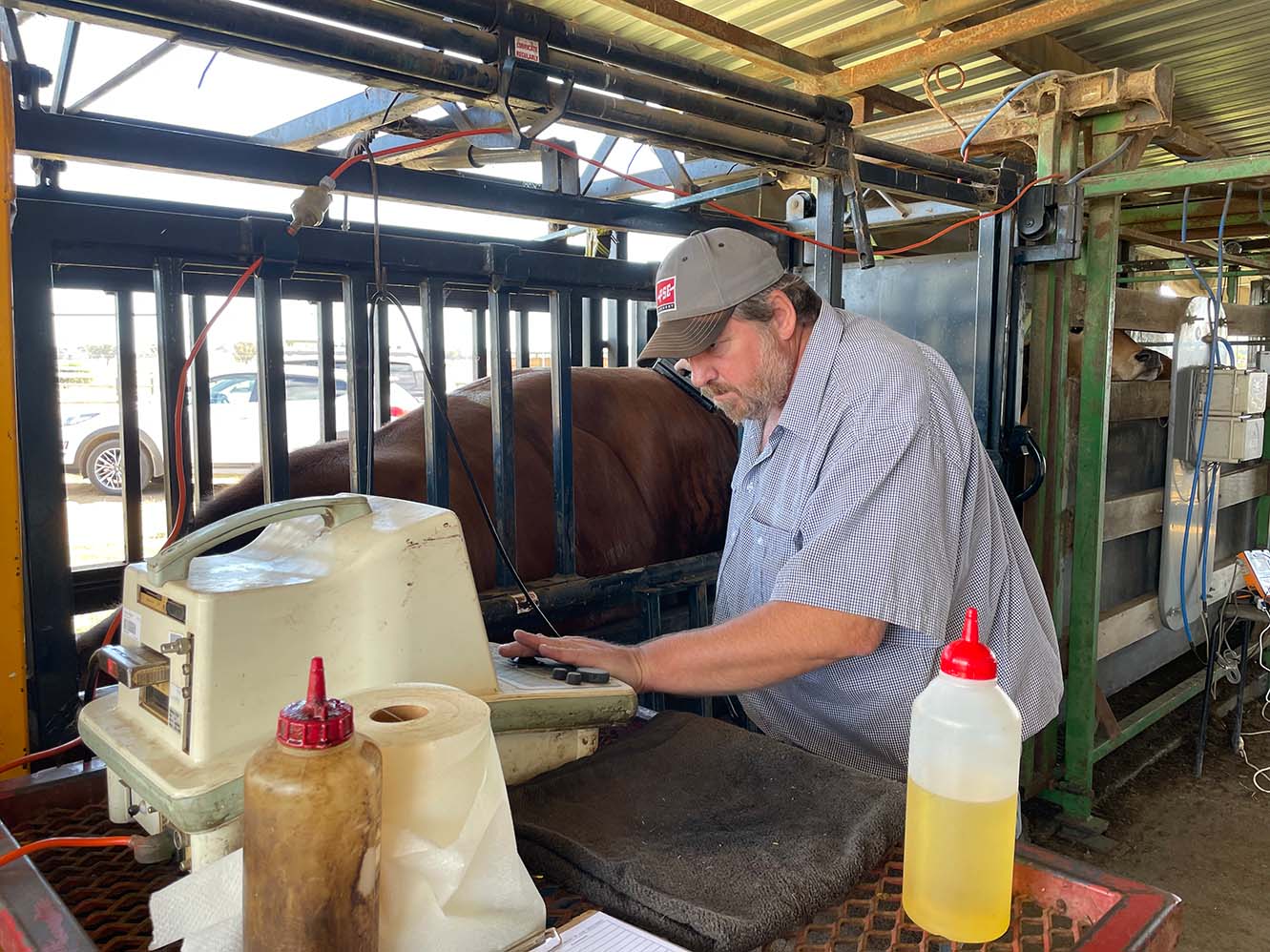Overlay project hopes to uncover new cow body composition traits

The Southern Multi Breed project provides a large reference population of females which are managed, from birth, under the same commercial conditions. AGBU’s Dr Matt Wolcott is exploiting this opportunity to try and fill a crucial gap in understanding around female productivity.
“For our BREEDPLAN genetic evaluation, we’ve got a pretty good description of animals before they enter that reproductive phase of their life,” he said.
“What we don’t have good information on is how cows are able to maintain themselves once they enter that reproductive phase, especially once they start lactating.”
Commercial beef breeders need to ensure cows are in adequate condition to meet the energy demands to maintain their own body reserves while partitioning resources to lactation, re-conception while continuing to put on weight and frame in early lactations.
Cow body condition is not well described in the current BREEDPLAN evaluation, and early research results suggest that the traits describing the genetics of carcass fatness, eye muscle area and marbling aren’t particularly good at describing those traits in females as they enter the reproductive phase of their lives.
“We need to understand how reproduction and lactation is impacting how cows are able to maintain body reserves. This is being investigated by collecting condition score data, along with weight, hip height and ultrasound measures of fatness and eye muscle area in wet females at their first re-breed.
By utilising the SMB reference cows, which are being intensively evaluated for reproductive traits (including age at puberty and lactation anestrous), Dr Wolcott and his team are gathering data that could also provide a more complete understanding of the genetics of cow body condition and its association with reproductive performance.
“The ultimate goal is to produce a BREEDPLAN EBV for lactating cow body composition, which can be applied by breeders to make better informed selection decisions around female productivity. The trait is also central to the breeding objective, as it directly impacts the need for supplementary feeding or reducing stocking rate when feed availability is limiting, which makes it very useful in the development of selection indexes.” he said.
The current project has included Angus and Hereford seedstock breeders who have volunteered to have the recording done in their herds, and this data, along with that collected in the SMB females, will allow early results for temperate beef breeds to be made available more quickly than if we were relying on recording in research herds alone.
The Animal Genetics and Breeding Unit (AGBU) is a joint venture between the NSW Department of Primary Industries (DPI) and University of New England (UNE).